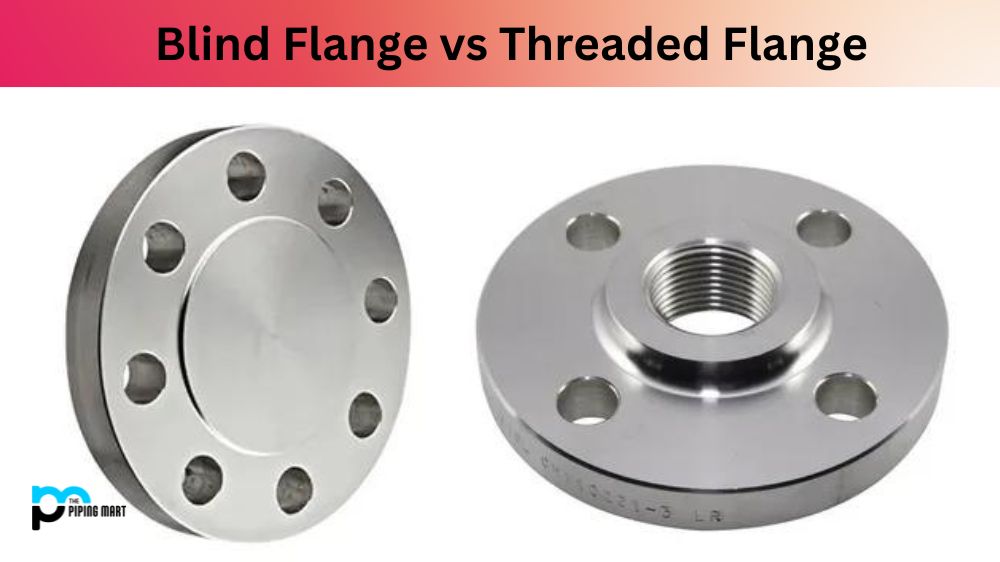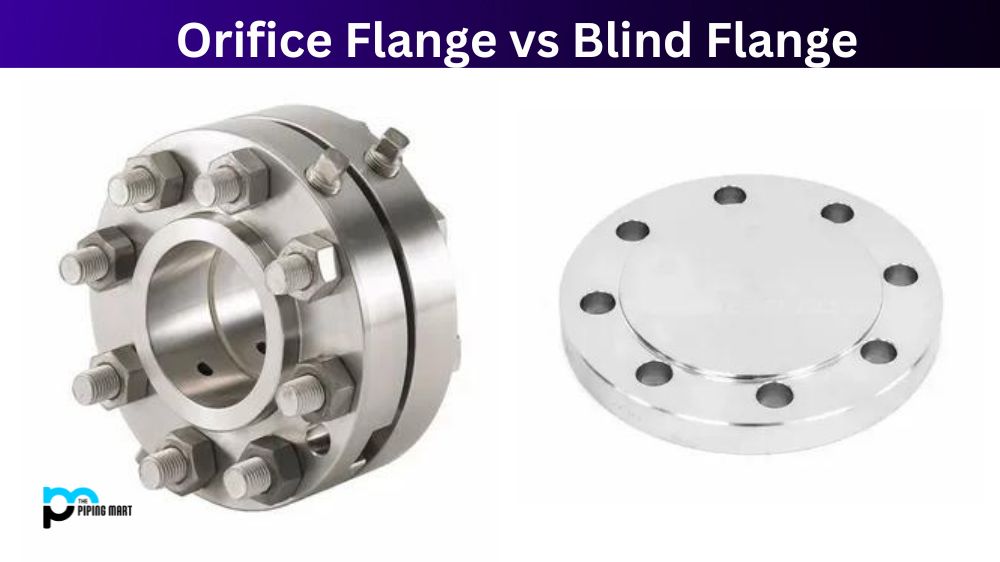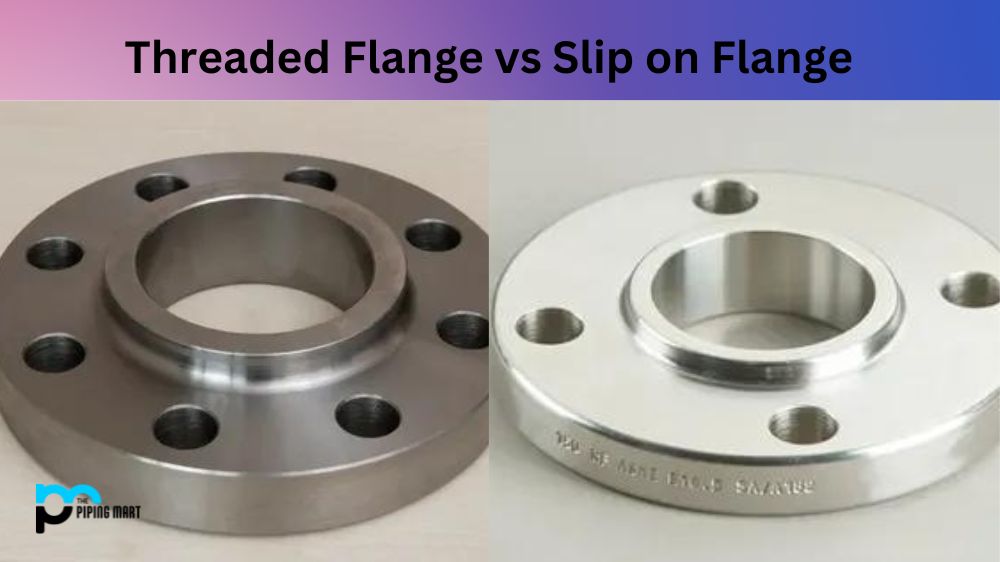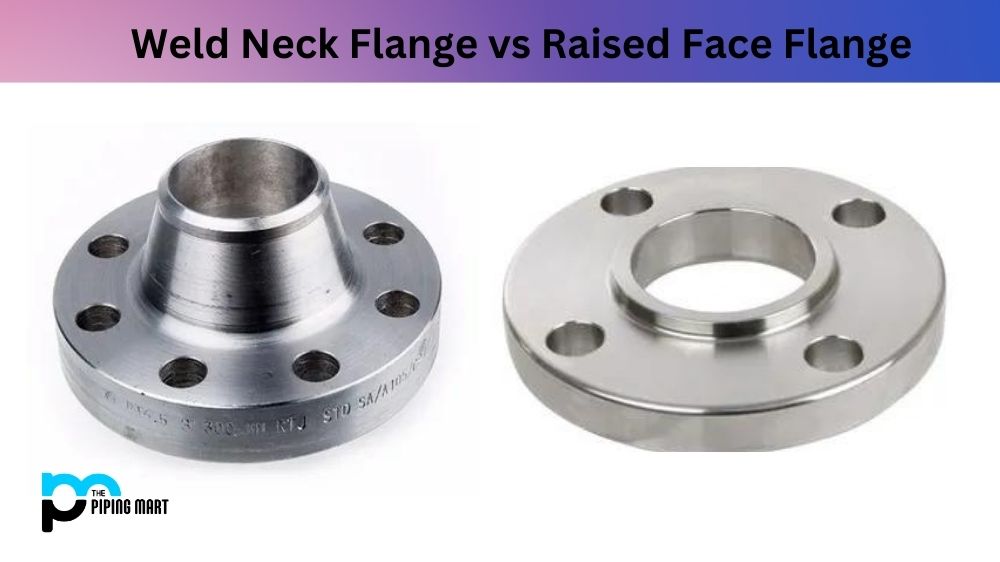If you are in the market for flanges, you have probably come across blind flanges and threaded flanges. These two types of flanges are commonly used in various industries, and they serve different purposes. Knowing the difference between these two types of flanges can help you make an informed decision when purchasing flanges. In this blog post, we will take a look at the differences between blind flanges and threaded flanges.
Blind Flange
A blind flange is a circular pipe fitting used to close and terminate the end of a pipeline. It has no internal bore and is usually round with exposed threads on both sides for bolting to flat-faced, lap joint, or raised face flanges. Blind Flanges are commonly used in high-pressure applications where liquid flow must be blocked or checked without physically connecting with the line.
Threaded Flange
Threaded Flanges are flange types that use threads instead of bolts to attach the flange to a pipe. They offer high pressure ratings and can come in either raised face or flat face styles. Threaded Flanges also have female threads, which means they can be attached directly onto pipes without welding them on. This makes them an easy and cost-effective option for many applications.
Difference Between Blind Flange and Threaded Flange
Purpose
Blind flanges are used to close off the end of a pipe or vessel, while threaded flanges attach piping or valves to a piece of equipment. Blind flanges are designed to prevent debris and other contaminants from entering the pipe or vessel. Threaded flanges, on the other hand, create a secure connection between the pipe or valve and the equipment.
Installation process
Blind flanges are typically installed by welding them onto the pipe or vessel. This process requires using tools and equipment such as welding machines and grinders. Threaded flanges, on the other hand, are attached to the pipe or valve using bolts and nuts. This process is relatively easy and does not require any specialized equipment.
Design
Blind flanges have a solid design, with no openings or holes, and they are usually made of thicker materials than threaded flanges. This makes them ideal for applications where high pressure and temperature are involved. Threaded flanges, on the other hand, have a threaded hole in the centre, allowing them to be screwed onto the pipe or valve. It is important to note that threaded flanges should be used only in low-pressure applications.
Maintenance
Blind flanges do not require much maintenance, as they are designed to remain closed and sealed. Threaded flanges, on the other hand, can become loose over time, which can cause leaks and other issues. Regular inspection and tightening of the bolts and nuts are necessary to ensure the proper functioning of threaded flanges.
Cost
Blind flanges are generally more expensive than threaded flanges due to their thicker and heavier design and the welding process involved in installation. Threaded flanges, on the other hand, are cheaper and easier to install, making them a popular choice for low-pressure applications.
Conclusion:
In conclusion, blind and threaded flanges have different purposes and designs. Blind flanges are used to close off the end of a pipe or vessel, while threaded flanges attach piping or valves to a piece of equipment. Blind flanges are installed by welding, while threaded flanges are attached using bolts and nuts. Blind flanges have a solid design, while threaded flanges have a threaded hole in the centre. Blind flanges are more expensive than threaded flanges but ideal for high-pressure applications. Threaded flanges are cheaper and easier to install but should be used only in low-pressure applications. Knowing the difference between these two types of flanges can help you make an informed decision when purchasing flanges.

A passionate metal industry expert and blogger. With over 5 years of experience in the field, Palak brings a wealth of knowledge and insight to her writing. Whether discussing the latest trends in the metal industry or sharing tips, she is dedicated to helping others succeed in the metal industry.




